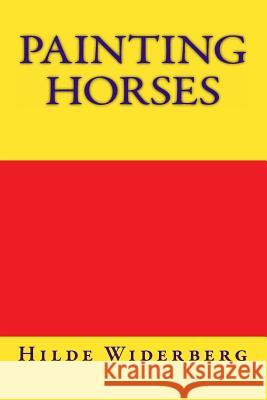Painting horses » książka
Painting horses
ISBN-13: 9781495283871 / Angielski / Miękka / 2014 / 82 str.
This is a tribute to my mother, Else Margrethe Widerberg, who died in 2006, and her brother, Frans (Frantz Gustav) Widerberg, who will turn 80 in 2014. He is a successful Norwegian artist, famous for his colorful pictures of horses and riders. The book indicates how their upbringing in a dysfunctional family influenced on their lives and on his art. Critics basically has misunderstood his art, because they don't know about his upbringing in an incestual family. I know the story, and with that in mind it's not difficult to see that his art most of all is a kind of self-therapy. Although art therapy is a relatively young therapeutic discipline, its roots lie in the use of the arts in the 'moral treatment' of psychiatric patients in the late 18th century and in a re-evaluation of the art of non-western art and of the art of untrained artists and of the insane. Art therapy as a profession began in the mid-20th century, arising independently in English-speaking and European countries. The early art therapists who published accounts of their work acknowledged the influence of aesthetics, psychiatry, psychoanalysis, rehabilitation, early childhood education, and art education, to varying degrees, on their practices. The British artist Adrian Hill coined the term 'art therapy' in 1942. Hill, recovering from tuberculosis in a sanatorium, discovered the therapeutic benefits of drawing and painting while convalescing. He wrote that the value of art therapy lay in "completely engrossing the mind (as well as the fingers)...releasing the creative energy of the frequently inhibited patient," which enabled the patient to "build up a strong defence against his misfortunes." He suggested artistic work to his fellow patients. That began his art therapy work, which was documented in 1945 in his book, Art Versus Illness. The artist Edward Adamson (1911-1996), recently demobilised after WW2, joined Adrian Hill to extend Hill's work to the British long stay mental hospitals. Other early proponents of art therapy in Britain include E. M. Lyddiatt, Michael Edwards, and Rita Simon. The British Association of Art Therapists was founded in 1964. U.S. art therapy pioneers Margaret Naumburg and Edith Kramer began practicing at around the same time as Hill. Naumburg, an educator, asserted that "art therapy is psychoanalytically oriented" and that free art expression "becomes a form of symbolic speech which...leads to an increase in verbalization in the course of therapy." Edith Kramer, an artist, pointed out the importance of the creative process, psychological defenses, and artistic quality, writing that "sublimation is attained when forms are created that successfully contain...anger, anxiety, or pain." Other early proponents of art therapy in the United States include Elinor Ulman, Robert "Bob" Ault, and Judith Rubin. The American Art Therapy Association was founded in 1969. National professional associations of art therapy exist in many countries, including Brazil, Canada, Finland, Israel, Japan, the Netherlands, Romania, South Korea, and Sweden. International networking contributes to the establishment of standards for education and practice. Diverse perspectives exist on history of art therapy, which complement those that focus on the institutionalization of art therapy as a profession in Britain and the United States. Art therapy and outsider art The relation between the fields of Art Therapy and Outsider Art has been widely debated. The term 'Art Brut' was first coined by French artist Jean Dubuffet to describe art created outside the boundaries of official culture. Dubuffet used the term 'Art brut' to focus on artistic practice by insane-asylum patients. The English translation Outsider Art was first used by art critic Roger Cardinal in 1972.
Zawartość książki może nie spełniać oczekiwań – reklamacje nie obejmują treści, która mogła nie być redakcyjnie ani merytorycznie opracowana.











